Gain insight on SAS solutions and analytics technology with our collection of free e-books.
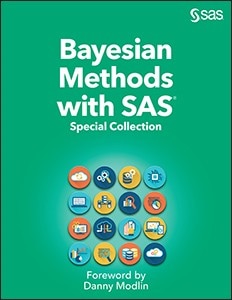
Foreword by Danny Modlin
The heart of Bayesian analysis is the ability to incorporate outside information (also called prior information) into the analysis. Thanks to advances in technology, applying Bayesian techniques is easier than ever. SAS offers many different solutions to estimate probability using Bayesian methods, and this book presents several groundbreaking papers that have been written to demonstrate these techniques.
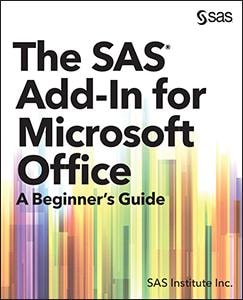
Tap into the power of SAS through familiar Microsoft applications to create meaningful reports and presentations to share with others. With the SAS Add-In for Microsoft Office, you can explore data or insert SAS tables and charts into a spreadsheet or document to work with them in Office – all with no programming skills required! This book will show you how to use the SAS add-in in various applications and explain how to use the SAS add-in’s dynamic features to create customized results with just a few clicks. Seamless integration makes it easy to collaborate and share analytics-driven reports, visualizations, KPIs, and dashboards with the rest of your team.
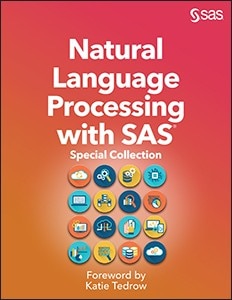
Foreword by Katie Tedrow
Natural Language Processing (NLP) is a branch of artificial intelligence that helps computers understand, interpret, and emulate written or spoken human language. NLP draws from many disciplines including human-generated linguistic rules, machine learning, and deep learning to fill the gap between human communication and machine understanding. The papers included in this special collection demonstrate how NLP can be used to scale the human act of reading, organizing, and quantifying text data.

Foreword by Susan Kahler
Computer vision is a field of artificial intelligence that trains computers to interpret and understand the visual world. In recent years, computer vision has begun to rival and even surpass human visual abilities in many areas. SAS offers many different solutions to train computers to “see” by identifying and classifying objects, and several groundbreaking papers have been written to demonstrate these techniques. The papers included in this special collection demonstrate how the latest computer vision tools and techniques can be used to solve a variety of business problems.

Foreword by Marinela Profi
Turn analytical models into business value and smarter decisions with this special collection of papers about SAS Model Management. Without a structured and standardized process to integrate and coordinate all the different pieces of the model life cycle, a business can experience increased costs and missed opportunities. SAS Model Management solutions enable organizations to register, test, deploy, monitor, and retrain analytical models, leveraging any available technology – including open-source models in Python, R, and TensorFlow –into a competitive advantage.
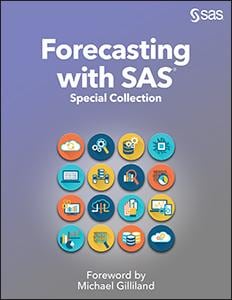
Foreword by Michael Gilliland
Want to get the most insight out of your data and improve the quality of your forecasts? SAS offers many different solutions to quickly generate reliable forecasts. This special collection includes papers that explore how to monitor and improve forecasts. You will also learn about the latest features of SAS® Forecast Server, SAS® Visual Forecasting, SAS® Econometrics, SAS/ETS®, and SAS® Enterprise Guide® to help you get the most out of your data.
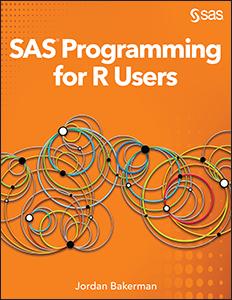
Foreword by Jordan Bakerman
This book is designed for experienced R users who want to transfer their programming skills to SAS. Emphasis is on programming and not statistical theory or interpretation. You will learn how to write programs in SAS that replicate familiar functions and capabilities in R. You will also learn how to call R from SAS using IML
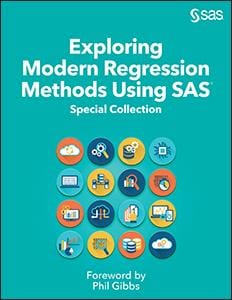
Foreword by Phil Gibbs
This special collection of SAS Global Forum papers demonstrates new and enhanced capabilities and applications of lesser-known SAS/STAT and SAS Viya procedures for regression models.
The goal here is to raise awareness of current valuable SAS/STAT content of which the user may not be aware.
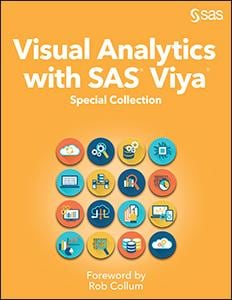
Foreword by Rob Collum
SAS® Visual Analytics is a business intelligence and analytics platform that provides visual exploration and discovery, self-service analytics, and interactive reporting for organizations of all sizes.
Several useful papers have been written to demonstrate how to use these techniques. We have carefully selected a handful of these from recent Global Forum contributions to introduce you to the topic and let you sample what each has to offer.

Foreword by Saratendu Sethi
SAS provides many different solutions to investigate and analyze text and operationalize decisioning. Several impressive papers have been written to demonstrate how to use these techniques.
We have carefully selected a handful of these from recent Global Forum contributions to introduce you to the topic and let you sample what each has to offer.
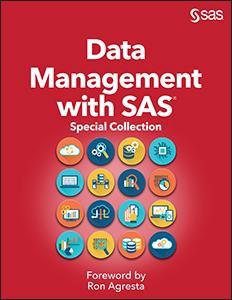
Foreword by Ron Agresta
SAS offers many different data management solutions to handle and protect your data. The papers included in this special collection demonstrates the latest tools and techniques that can benefit your data analysis.
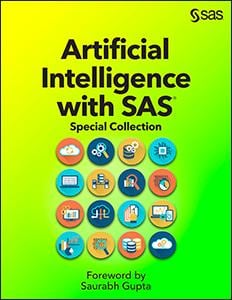
Foreword by Saurabh Gupta
Today, powerful AI is augmenting analytics in every area, and helping to maximize the value of the analytic tools and solutions that SAS Press has been championing for the last 42 years.
We have carefully selected a handful of groundbreaking papers from recent SAS Global Forum papers which illustrate how SAS is adding capabilities to our tools and solutions that help customers build their own AI solutions; and examples of AI solutions using our tools.
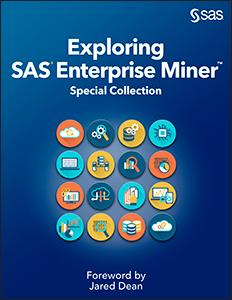
Foreword by Jared Dean
SAS Enterprise Miner was first released in 1999. The interface has changed, and the capabilities have increased, but what remains the same is the potential Enterprise Miner gives its users to answer some of their most difficult predictive modeling challenges.
The papers included in this special collection have been selected to broaden your knowledge of Enterprise Miner; its utility and productivity.
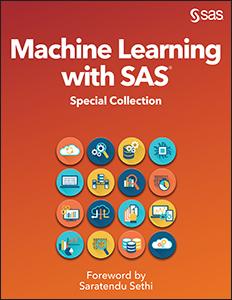
Foreword by Saratendu Sethi
Machine learning is a powerful tool with many applications, from real-time fraud detection, recommender systems, and smart cars. It will not be long before some form of machine learning is integrated into all machines.
SAS offers many different solutions to use machine learning to model and predict your data. The papers included in this special collection demonstrate how cutting-edge machine learning techniques can benefit your data analysis.
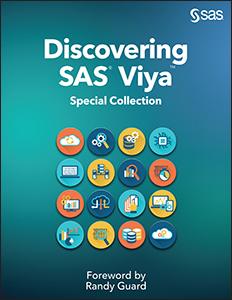
Foreword by Randy Guard
To illustrate the power and flexibility of SAS Viya, several groundbreaking papers have been carefully selected from recent SAS Global Forum presentations to introduce you to the topics and to let you sample what each has to offer.
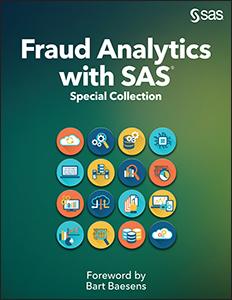
Foreword by Bart Baesens
SAS software provides many different techniques to monitor in real time and investigate your data, and several groundbreaking papers have been written to demonstrate how to use these techniques. Topics covered illustrate the power of SAS solutions that are available as tools for fraud analytics, highlighting a variety of domains, including money laundering, financial crime, and terrorism.
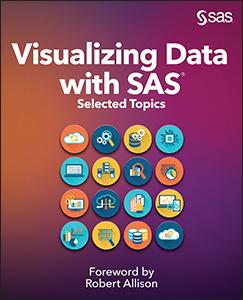
Foreword by Robert Allison
Creative data exploration and creative problem solving begin with visualizing your data. Data visualization is critical in helping consumers grasp difficult concepts or identify new patterns that emerge from their data. Our data keeps getting bigger, and we need quicker, easier ways to convey it!
Topics covered in this free e-book illustrate the power of SAS solutions that are available as tools for data visualization, highlighting a variety of domains, including infographics, geomapping, and clinical graphs for the health and life sciences.
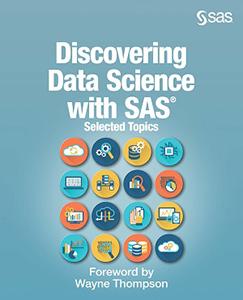
Foreword by Wayne Thompson
Prior to his retirement, Wayne Thompson was the Manager of Data Science Technologies at SAS. He defines data science as a broad field that entails applying domain knowledge and machine learning to extract insights from complex and often dark data. To further help define data science, we have carefully selected a collection of chapters from SAS Press books that introduce and provide context to the various areas of data science, including their use and limitations.
Topics covered illustrate the power of SAS solutions that are available as tools for data science, highlighting a variety of domains including data analysis planning, data wrangling and visualization, time series, neural networks, text analytics, decision trees and more.
